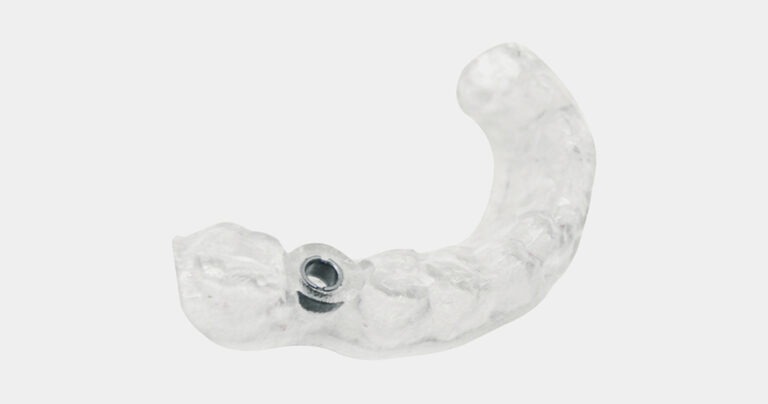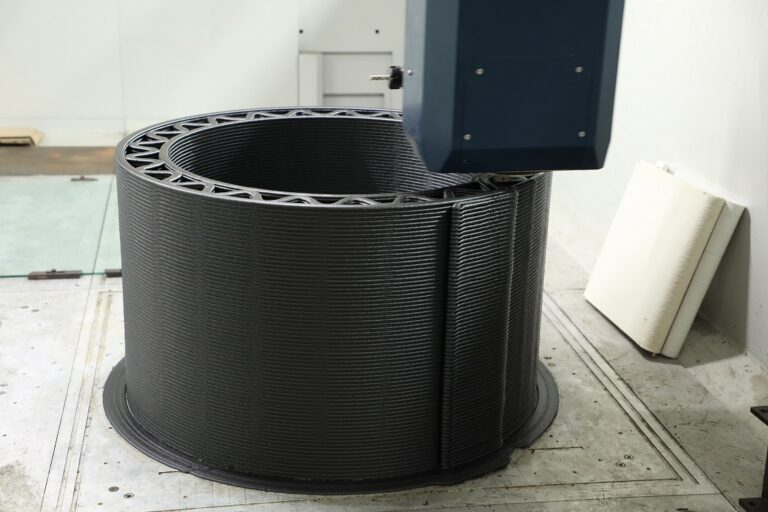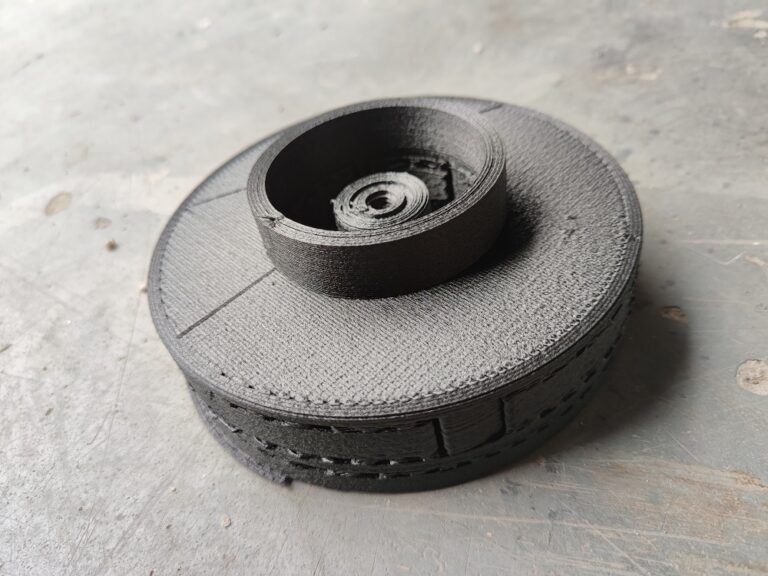Table of Contents
3D printing is transforming the dental industry, making it easier to produce custom products like dental prosthetics, implants, and surgical equipment such as guides. Among these innovations, 3D printed dental surgical guides stand out as a standard tool that assists implant procedures, reduces surgery duration, and minimizes the risk of complications. With advanced 3D printing systems, dental surgical guides are more affordable and accurate than those made with traditional processes.

What is a Surgical Guide Dental?
A surgical guide in dentistry is a custom-made medical device used to assist dental surgeons during implant procedures. These guides are designed to fit over the patient’s teeth and gums, providing a precise template for drilling and implant placement. The primary purpose of a surgical guide is to ensure that dental implants are positioned accurately, aligning with the pre-planned surgical path. This precision is crucial for the success of the implant, affecting the implant’s stability, functionality, and longevity.
Traditional surgical guides were crafted using labor-intensive methods that involved manual adjustments and multiple patient visits. This process was not only time-consuming but also prone to human error. The introduction of digital workflows and 3D printing technology has revolutionized the production of surgical guides, making them more precise and efficient.
What is a 3D Printed Surgical Guide?
A 3D printed surgical guide is a custom-made device created using advanced 3D printing technology. These guides are designed based on digital scans of the patient’s mouth, ensuring an exact fit and accurate placement of dental implants. The process begins with a digital impression of the patient’s oral anatomy, which is then used to design the surgical guide using specialized software. This digital model is sent to a 3D printer, which fabricates the guide layer by layer.
The precision of 3D printed surgical guides significantly reduces the margin for error during implant procedures. They provide a clear, accurate path for drilling, ensuring that implants are placed in the optimal position. This accuracy is especially beneficial for complex cases where precise placement is critical to avoid damage to surrounding structures such as nerves and sinuses.
What Material is Used for Surgical Guides?

Surgical guides are typically made from a biocompatible material known as Surgical Guide Resin. This resin is specifically designed for crafting surgical guides and is known for its transparency and high precision. Surgical Guide Resin is a Class I material, meaning it meets the stringent safety and performance standards required for medical devices.
Key features of Surgical Guide Resin include:
- Biocompatibility: Safe for use in the human body, minimizing the risk of adverse reactions.
- Transparency: Allows for clear visibility during surgical procedures, enabling the dentist to see the underlying structures and ensure accurate placement.
- High Precision: Provides exceptional accuracy, ensuring that the surgical guide fits perfectly and directs the drilling path precisely.
- Versatility: Suitable for various applications, including implant surgery, orthodontic guides, and functional retainers.
The use of Surgical Guide Resin ensures that 3D printed surgical guides offer superior performance and reliability compared to traditional methods.
What Are the Benefits of 3D Printed Surgical Guides?
Better Customer Experience
Patients benefit from the improved efficiency and accuracy of 3D printed surgical guides. The reduced treatment time and fewer adjustments result in a more comfortable and convenient experience. Additionally, the precise fit of the surgical guides enhances patient outcomes, leading to better long-term satisfaction with their dental implants.
Higher Accuracy
3D printed surgical guides offer unparalleled accuracy. The digital design and manufacturing process ensures that each guide is tailored to the patient’s unique anatomy, providing a precise template for implant placement. This accuracy reduces the risk of errors and complications during surgery, improving the overall success rate of dental implants.

Rapid Turnaround
One of the most significant advantages of 3D printed surgical guides is the speed of production. Traditional methods of crafting surgical guides can take several weeks, involving multiple patient visits and manual adjustments. In contrast, 3D printing allows for the rapid creation of surgical guides, often within a few hours. This quick turnaround time is particularly beneficial for urgent cases, enabling faster treatment and reducing patient wait times.
What is the Best Dental 3D Printer for Surgical Guides?
Choosing the right 3D printer for dental surgical guides is crucial for achieving optimal results. Piocreat offers top-of-the-line 3D printers designed for the dental industry. Two standout models are:
DJ89 PLUS 8K 10.3" LCD 3D Printer
- Top cost-effective resin 3D printer for dental industries
- 29μm Pixel Size: Delivers unmatched print clarity and detail. The high resolution ensures that even the smallest details of the surgical guide are accurately reproduced.
- Heating Chamber: Ensures consistent temperature for optimal printing conditions, maintaining the quality of the printed guides.
- Automatic Feeding: Simplifies the printing process and reduces manual intervention, enhancing efficiency.
- Stable Z-axis Structure: Provides precise and reliable prints, crucial for producing high-quality surgical guides.
D158 DLP 3D printer
- Texas Instruments Technology: Utilizes advanced technology for precision and reliability.
- Automatic Lifting Cover: Enhances usability and simplifies the printing process.
- 62μm Pixel Size: Offers high-resolution prints, ensuring detailed and accurate surgical guides.
- High Speed Release Film: Improves printing efficiency by reducing the time required for layer separation.
- Stable Z-axis Structure: Ensures consistent and precise printing, essential for dental applications.
Both models are designed to meet the demanding requirements of dental professionals, providing the accuracy and reliability needed for successful implant procedures.
Conclusion
3D printed dental surgical guides are revolutionizing dental implant procedures, offering unmatched precision, efficiency, and patient satisfaction. By utilizing advanced 3D printing technology and high-quality materials like Surgical Guide Resin, dental professionals can produce custom surgical guides quickly and accurately. With dental 3D printers like the DJ89 PLUS and D158, the future of dental surgery is brighter and more efficient than ever.
Embracing 3D printing for dental surgical guides not only enhances the quality of care but also streamlines the workflow, making dental practices more productive and effective. As the technology continues to evolve, we can expect even greater advancements in the field of dental surgery, leading to better outcomes and improved patient experiences.



